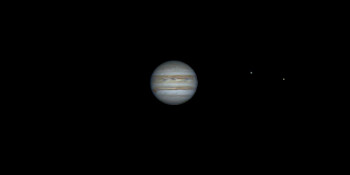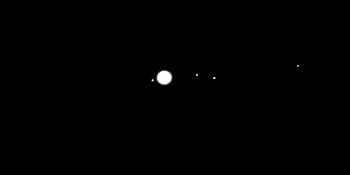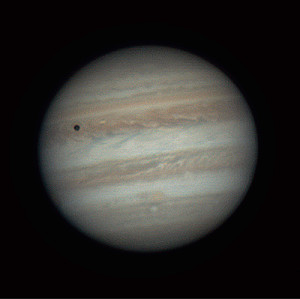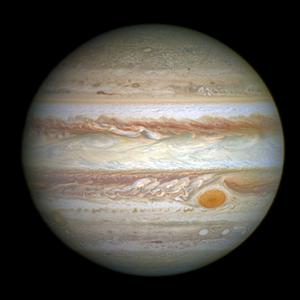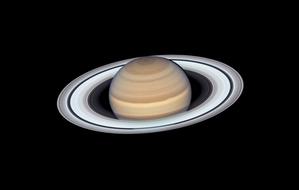Glossary term: 氣態巨行星
Description: 氣態巨行星是指主要由氫和氦組成的巨行星,這兩種元素在星際和行星際空間中都是氣態的,因此得名“氣態巨行星"。然而實際上,氣態巨行星中大部分的氫和氦是液態的。
氣態巨行星被認為具有岩石內核,其周圍是厚厚的氫和氦層。在行星最深處,這些氣體被壓縮成液態,最深層被認為有一片金屬氫的海洋。在外層,氫和氦呈氣態。大氣中的其他元素會形成雲和雨。在最冷的氣態巨行星中,上層的雲可能由水或氨蒸氣組成。在溫度較低的氣態巨行星更深、更熱的層中,以及在溫度較高的氣態巨行星的外層,雲可以由室溫下固態的鐵和礦物組成。
太陽系中最大的兩顆行星--木星和土星都是氣態巨行星。
Related Terms:
See this term in other languages
Term and definition status: The original definition of this term in English have been approved by a research astronomer and a teacher The translation of this term and its definition is still awaiting approval
This is an automated transliteration of the simplified Chinese translation of this term
The OAE Multilingual Glossary is a project of the IAU Office of Astronomy for Education (OAE) in collaboration with the IAU Office of Astronomy Outreach (OAO). The terms and definitions were chosen, written and reviewed by a collective effort from the OAE, the OAE Centers and Nodes, the OAE National Astronomy Education Coordinators (NAECs) and other volunteers. You can find a full list of credits here. All glossary terms and their definitions are released under a Creative Commons CC BY-4.0 license and should be credited to "IAU OAE".
If you notice a factual or translation error in this glossary term or definition then please get in touch.
Related Media
木星的自轉,作者 Vishal Sharma,印度
Credit: Vishal Sharma/IAU OAE
License: CC-BY-4.0 Creative Commons 姓名標示 4.0 國際 (CC BY 4.0) icons
木衛影片2,Nicolas Hurez,Paul-Antoine Matrangolo,和Carl Pennypacker,美國
Credit: Nicolas Hurez,Paul-Antoine Matrangolo 和 Carl Pennypacker/IAU OAE
License: CC-BY-4.0 Creative Commons 姓名標示 4.0 國際 (CC BY 4.0) icons
木星、木衛一及其陰影,作者:Ralf Burkart,德國
Credit: Ralf Burkart/IAU OAE
License: CC-BY-4.0 Creative Commons 姓名標示 4.0 國際 (CC BY 4.0) icons
木星
Credit: 美國國家航空航天局、歐空局和 A. Simon(戈達德太空飛行中心) credit link
License: CC-BY-4.0 Creative Commons 姓名標示 4.0 國際 (CC BY 4.0) icons
土星
Credit: 美國國家航空航天局、歐空局、A. Simon(戈達德太空飛行中心)和 M.H. Wong(加州大學伯克利分校) credit link
License: CC-BY-4.0 Creative Commons 姓名標示 4.0 國際 (CC BY 4.0) icons
